What is Customer Success?

Customer success is about helping your customers achieve their goals with your product or service. It ensures they derive maximum value from what you offer, leading to long-term satisfaction and loyalty.
When customers succeed, they are more likely to stay with your business and recommend it to others, benefiting both them and your company.
Understanding customer success vs traditional customer service approaches can help businesses better align their strategies for improved customer satisfaction and long-term loyalty.
Why is Customer Success Important?

1. Increases Customer Satisfaction
- When customers are happy with your product or service, they are more likely to stay.
- This is known as customer retention.
- It results in more repeat purchases and fewer customers leaving, reducing the churn rate.
Example: A company focusing on customer success can increase its customer retention rate by up to 20%.
2. Revenue
- Happy customers are more likely to spend more money on your products.
- They might upgrade to a better plan or buy additional features, leading to more stable and predictable income for your business.
Companies that emphasize customer success often see a rise in Monthly Recurring Revenue (MRR). For instance, increasing customer retention by 5% can boost profits by 25-95% (Source: Bain & Company).
3. Improves Customer Lifetime Value
- Customer Lifetime Value (CLV) represents the total revenue a customer is projected to generate through their purchases over the duration of their relationship with your company.
- Focusing on customer success can increase this value.
- Customers who feel supported and valued will stick around longer and spend more.
Example: Companies with strong customer success programs see a 30% higher CLV (Source: Totango).
4. Reduces Customer Support Costs
- When customers understand how to use your product and get the most out of it, they have fewer problems.
- This means fewer calls and emails to your customer support team.
- Allows your support team to focus on helping new customers and solving more complex issues.
Example: Effective customer success strategies can reduce support costs by 15% (Source: TSIA).
5. Enhances Customer Feedback
- Customer success teams regularly check in with customers to see how they are doing.
- They ask for feedback and use this information to improve your product.
- Helps in understanding what customers like and what they don't, leading to continuous improvement.
Example: Companies that leverage customer feedback improve their products 2x faster (Source: Gartner).
6. Strengthens Customer Relationships
- Building strong relationships with customers is key to long-term success.
- When customers feel like you care about their success, they are more likely to trust you and stay loyal.
- Leads to higher customer satisfaction scores and positive word-of-mouth.
Example: Businesses focusing on customer relationships see a 50% increase in referrals (Source: Nielsen).
7. Drives Business Growth
- Customer success strategies can help your business grow.
- Happy customers often share their experiences with others.
- Can lead to new customers and increased market share.
- A good customer success program can be a strong differentiator in a competitive market.
Example: Customer success initiatives can lead to a 20% increase in new customer acquisition (Source: HubSpot).
8. Supports Key Performance Indicators (KPIs)
- Focusing on customer success helps track important KPIs like Net Promoter Score (NPS), Customer Satisfaction Score (CSAT), and Customer Effort Score (CES).
- These metrics offer valuable insights into your business’s performance and highlight areas that may require improvement.
Example: Companies that monitor KPIs see a 15% improvement in average customer lifetime satisfaction (Source: Customer Gauge).
15 Essential Customer Success Metrics
1. Customer Satisfaction Score (CSAT)
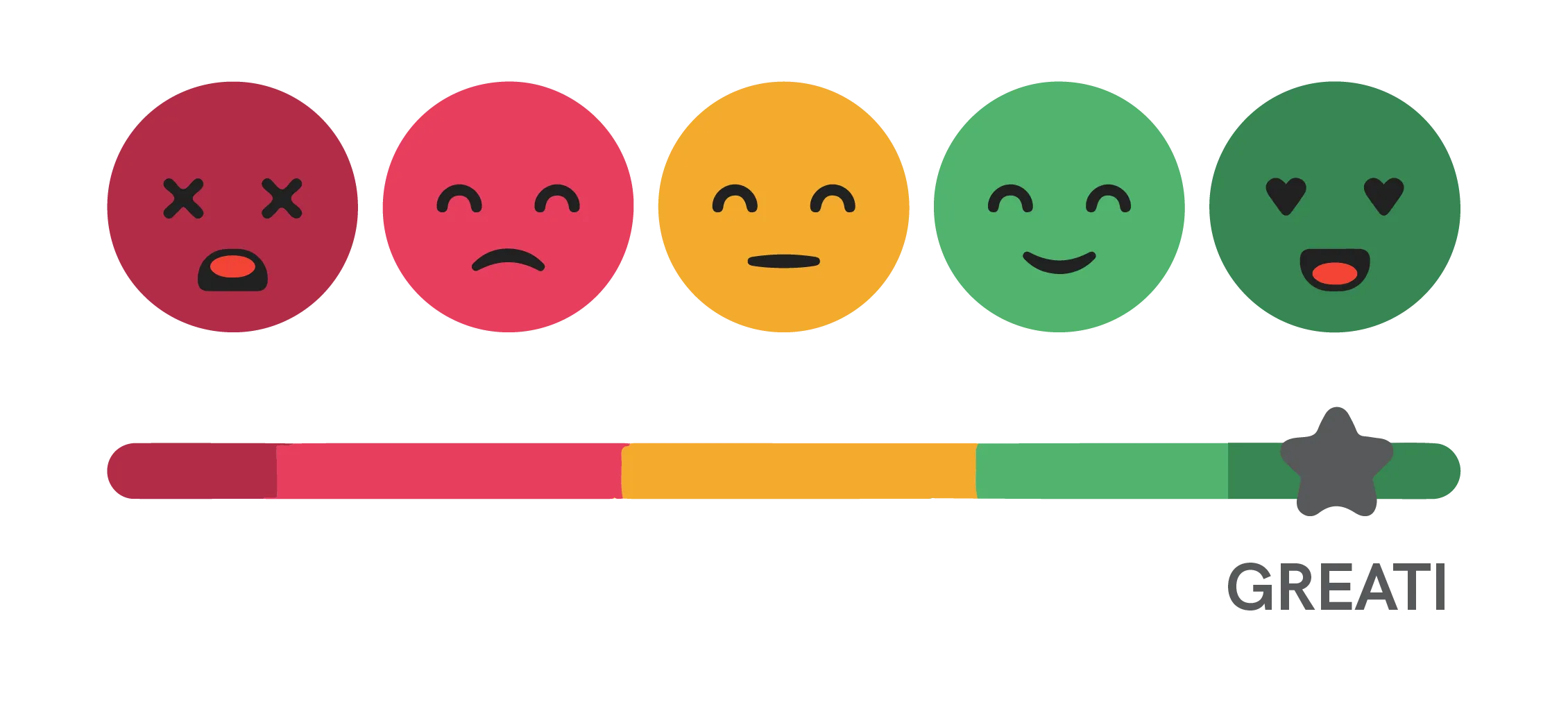
Customer Satisfaction Score (CSAT) gauges the level of satisfaction your customers have with your product or service. It’s a simple way to find out if they are satisfied.
How to Measure CSAT:
- After a customer interacts with your service, you can ask them a simple question like, "How satisfied were you with your experience?"
- They can rate it on a scale from 1 to 5, with 1 being very dissatisfied and 5 being very satisfied.
Why CSAT is Important:
- Knowing how satisfied your customers are helps you understand what you are doing right and what needs improvement.
- A high CSAT means your customers are happy, which can lead to more sales and loyal customers.
Example: Imagine you run an online store. After each purchase, you send a survey asking customers to rate their shopping experience. If most customers give you a high score, you know they are happy. If the scores are low, you can look into what went wrong and fix it.
2. Customer Lifetime Value (CLV)
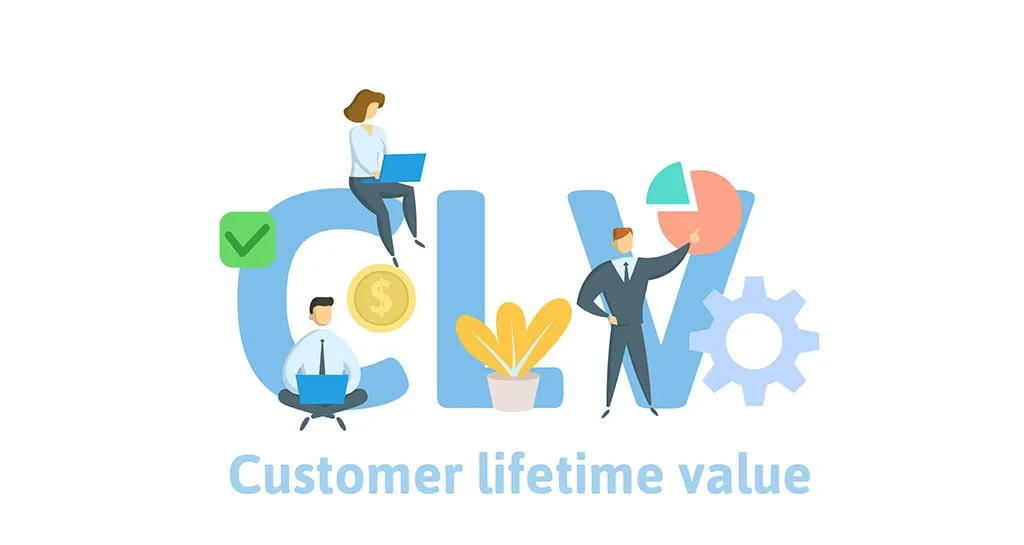
Customer Lifetime Value (CLV) indicates the total amount of money a customer is expected to spend on your products or services throughout their relationship with your company. This metric helps you measure customer success and understand the long-term value of keeping a customer happy.
How to Calculate CLV:
- To determine CLV, you must know three factors: the average value of purchases, the average frequency of purchases, and the typical duration of a customer’s relationship with your business.
- Multiply these three numbers to get the CLV.
Example: If a customer spends $50 per purchase, makes 4 purchases a year, and stays with your business for 5 years, their CLV is $50 x 4 x 5 = $1,000.
Why CLV is Important:
- A higher CLV means your customers are spending more money with your business over time.
- By focusing on customer success, you can increase CLV.
- Happy customers tend to buy more and stay longer.
Example: Let’s say you run a subscription service. If you keep your subscribers happy, they are more likely to renew their subscription every year. This increases their lifetime value to your business.
3. Net Promoter Score (NPS)
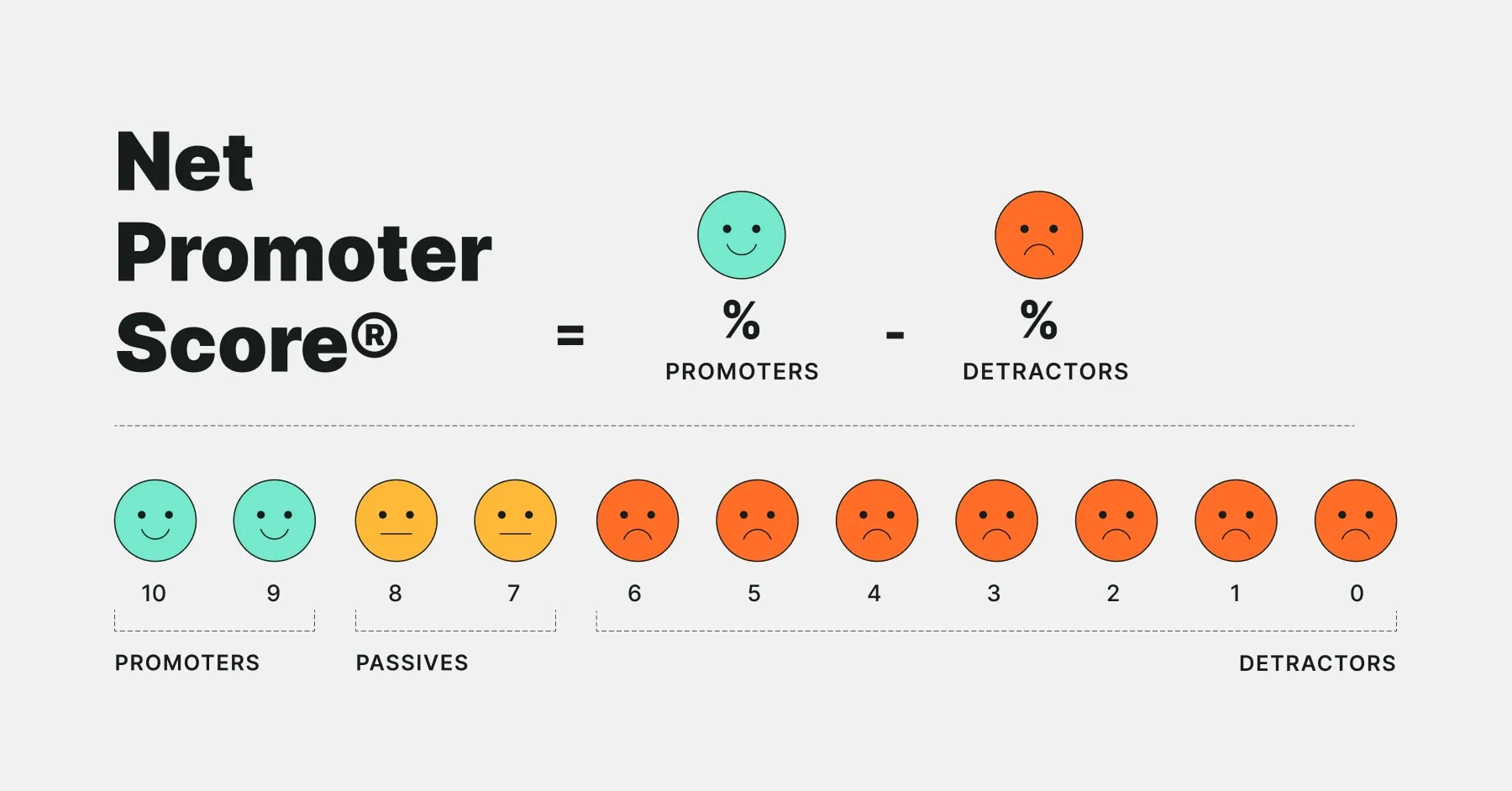
Net Promoter Score (NPS) gauges the likelihood of your customers recommending your product or service to others, providing valuable insight into their loyalty.
How to Measure NPS:
- Pose a straightforward question to your customers: "On a scale from 0 to 10, how likely are you to suggest our services to a friend or colleague?"
- Depending on their score, customers are classified as promoters (9-10), passives (7-8), or detractors (0-6).
- Calculating NPS: Subtract the percentage of detractors from the percentage of promoters. The result is your NPS.
Why NPS is Important:
- A high NPS means your customers love your product and are likely to tell others about it.
- This can lead to new customers through word-of-mouth.
Example: Think about a software company that asks its users to rate how likely they are to recommend the software to others. If many users give a high rating, the company knows it has loyal customers who are helping to spread the word.
4. Customer Retention Rate

Customer Retention Rate measures how many customers stay with your business over a period of time. It shows how well you keep your existing customers.
How to Calculate Customer Retention Rate:
You need to know three things:
- The number of customers at the start of the period.
- The number of new customers acquired during the period
- The number of customers at the end of the period.
The formula is:
Customer Retention Rate=(Customers at End of Period−New Customers Acquired/Customers at Start of Period)×100
Why Customer Retention Rate is Important:
- A high retention rate means your customers are happy and loyal.
- This is good for your business because it's cheaper to keep existing customers than to find new ones.
Example: If you started the year with 100 customers, gained 20 new customers, and ended the year with 110 customers, your retention rate would be:
(110−20/100)×100=90%
5. Churn Rate
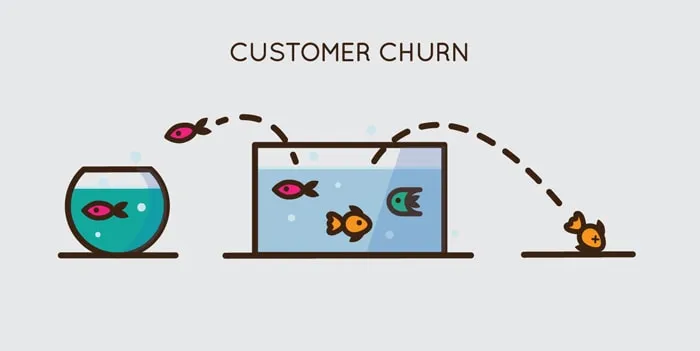
Churn Rate is the opposite of customer retention cost and rate. It measures how many customers leave your business over a period of time.
How to Calculate Churn Rate:
- You need to know the number of customers who left during a period.
- And the number of customers at the start of the period.
The formula is:
Churn Rate=(Customers at Start of Period/Customers Who Left)×100
Why Churn Rate is Important:
- A high churn rate means many customers are leaving, which can hurt your business.
- Lowering the churn rate is important for growth and stability.
For instance, if you began the month with 200 customers and 10 of them departed, your churn rate would be:
(10/200)×100=5%
6. Monthly Recurring Revenue (MRR)
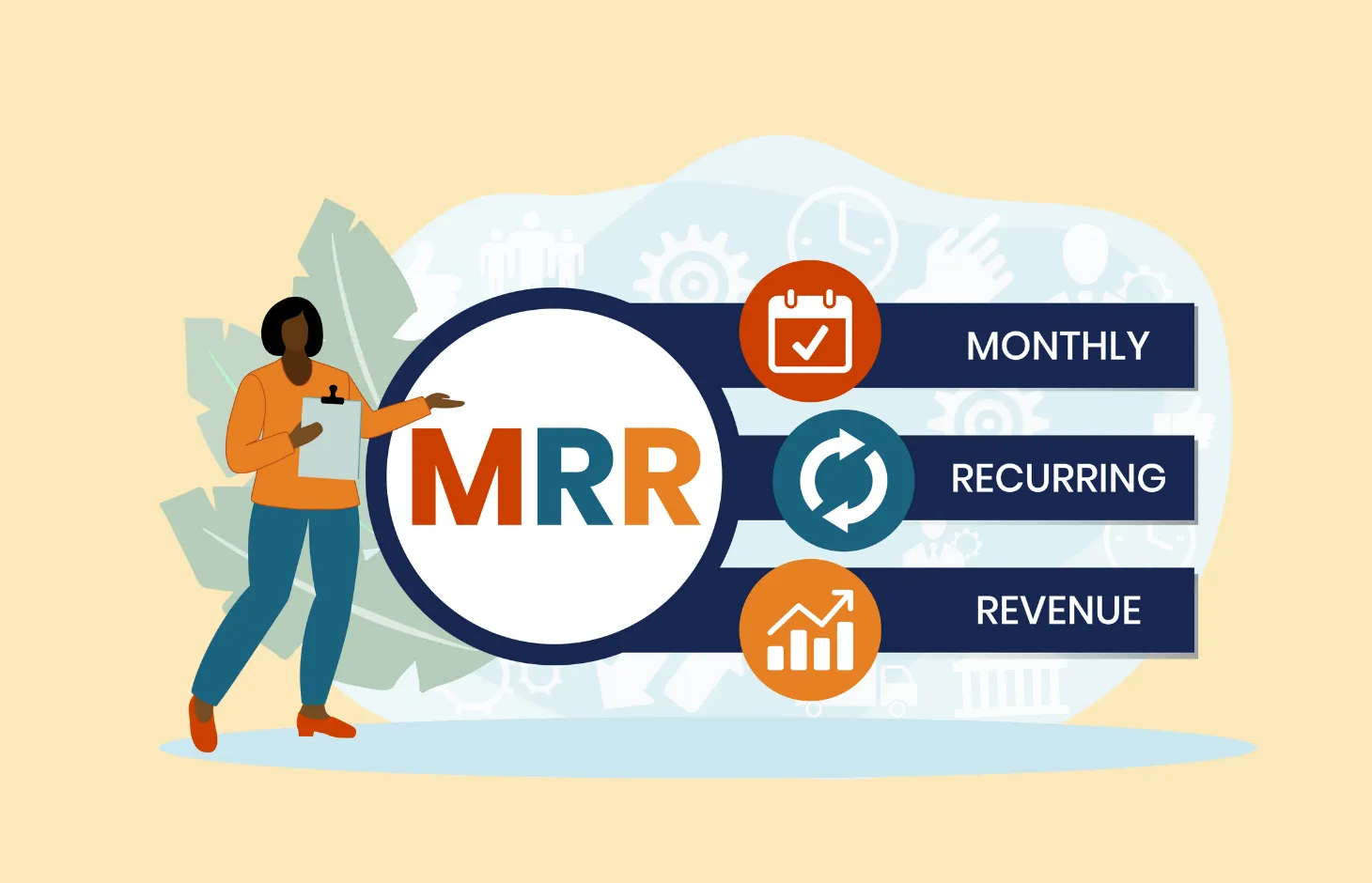
Monthly Recurring Revenue (MRR) is the predictable income your business earns each month from subscriptions or recurring charges.
How to Calculate MRR:
- Add up all the recurring revenue from your customers.
- This includes subscriptions and any other monthly fees.
Why MRR is Important:
- MRR helps you understand your business's financial health and predict future revenue.
- It shows how much money you can expect to make each month.
Example: If you have 50 customers paying $100 each per month, your MRR is:
50×100=$5000
7. Customer Effort Score (CES)
Customer Effort Score (CES) measures how easy it is for customers to interact with your company. It tells you how much effort customers have to put in to get their issues resolved.
How to Measure CES:
- After a customer service interaction, ask the customer a question like, "How easy was it to solve your problem?"
- They can rate it on a scale from 1 (very difficult) to 5 (very easy).
Why CES is Important:
A lower effort score means customers find it easy to do business with you, which leads to higher satisfaction and customer loyalty.
Example: Imagine you run an online store. After customers make a purchase, you ask them to rate how easy it was to find and buy products. If most customers rate it as easy, your CES is high.
8. First Contact Resolution Rate (FCR)

First Contact Resolution Rate (FCR) measures how often customer issues are resolved on the first contact with your support team. It shows how efficient your customer support team is.
How to Measure FCR:
Track the number of customer issues resolved on the first contact divided by the total number of issues.
The formula is:
FCR=(Issues Resolved on First Contact/Total Issues)×100
Why FCR is Important:
A high FCR means your support team is effective, leading to higher customer satisfaction and lower support costs.
Example: If your support team resolves 80 out of 100 issues on the first contact, your FCR is;
(80/100)×100=80%
9. Customer Health Score
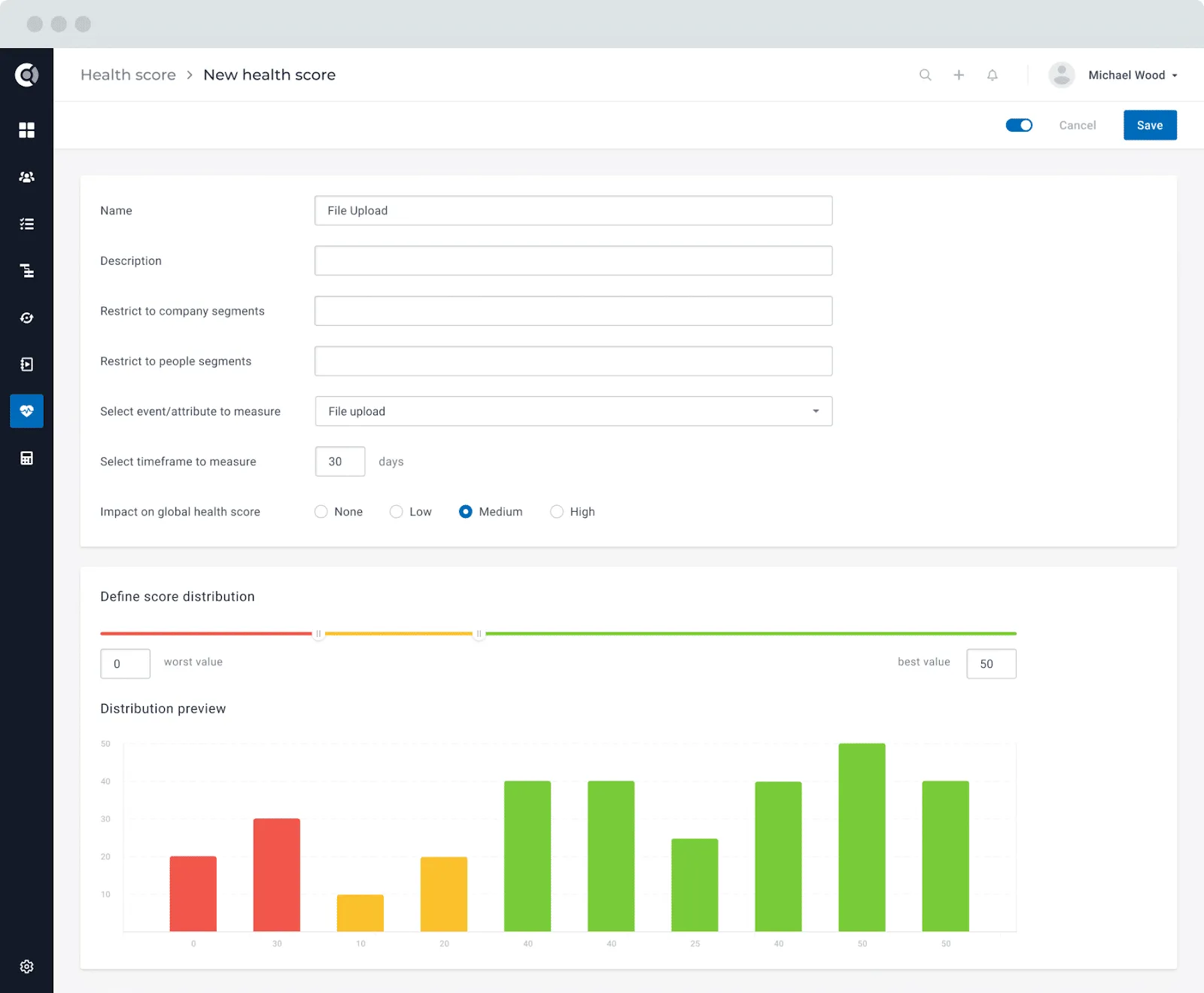
Customer Health Score measures the overall well-being of your customer relationships. It combines various metrics to give a single score indicating customer satisfaction and likelihood to stay.
How to Calculate Customer Health Score:
- Combine metrics like customer satisfaction score (CSAT), customer lifetime value (CLV), and customer engagement.
- Each metric is given a weight, and the overall score is calculated.
Why Customer Health Score is Important:
- A high health score means your customers are happy and engaged.
- It helps predict future behavior and identify at-risk customers.
Example: If a customer has a high CSAT, makes frequent purchases, and engages regularly with your brand, their health score will be high. This indicates a strong and positive relationship.
10. Customer Success Metrics Dashboard

A Customer Success Metrics Dashboard is a tool that shows you all your important customer metrics in one place. It helps you track how well your customer success team is performing.
What it Includes:
- The dashboard can include metrics like customer satisfaction score (CSAT), customer lifetime value (CLV), and customer retention rate.
- It gives a quick overview of how your customers are doing.
Why It's Important:
- Having all the metrics in one place makes it easy to see trends and spot problems.
- You can quickly find out if customers are happy or if there are issues that need to be fixed.
Example: Imagine you manage a customer success team. With a dashboard, you can see if customer satisfaction scores are dropping and take action to improve them.
11. Customer Acquisition Cost (CAC)
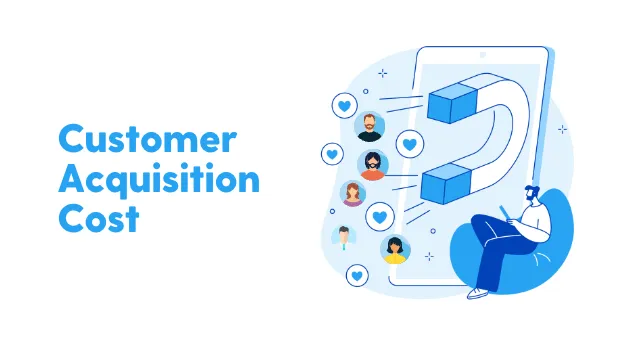
Customer Acquisition Cost (CAC) tells you how much money you spend to get a new customer. It helps you understand if your marketing and sales efforts are cost-effective.
How to Calculate CAC:
Add up all the costs of acquiring new customers (like marketing and sales expenses) and divide by the number of new customers.
The formula is:
CAC=Total Costs to Acquire Customers/ Number of New Customers
Why CAC is Important:
- Knowing your CAC helps you figure out if you're spending too much to get new customers.
- Lowering your CAC can make your business more profitable.
Example: If you spend $1,000 on marketing and get 10 new customers, your CAC is:
1000/10=$100
12. Customer Support Ticket Volume

Customer Support Ticket Volume measures how many support requests your team receives. It shows how many issues your customers are facing.
Why Track Ticket Volume:
- High ticket volume can indicate problems with your product or service.
- Tracking this metric helps you understand customer pain points and improve your offerings.
How to Use This Metric:
If you see a sudden increase in support tickets, it might mean there is a problem that needs to be fixed quickly.
Example: If your support team usually handles 50 tickets a day but suddenly sees 100 tickets, it’s a sign that something might be wrong, like a bug in your software.
13. Average Revenue Per User (ARPU)

Average Revenue Per User (ARPU) measures how much money you make from each customer on average. It helps you understand the value each customer brings to your business.
How to Calculate ARPU:
Divide the total revenue by the number of customers.
The formula is:
ARPU=Total Revenue/ Number of Customers
Why ARPU is Important:
- A higher ARPU means each customer is spending more, which is good for your business.
- It helps you see how well your sales and marketing efforts are working.
Example: If your total revenue is $10,000 and you have 100 customers, your ARPU is;
10000/100=$100
14. Customer Success Team Efficiency

Customer Success Team Efficiency measures how well your customer success team is performing. It is customer success metric that shows how effective they are at helping customers and solving problems.
How to Measure Efficiency:
Track metrics like the number of cases handled per team member, average resolution time, and customer satisfaction scores.
Why Efficiency is Important:
Professional services by sales team can handle more cases and provide better service, which leads to happier customers.
Example: If each team member handles 20 cases a day and resolves them quickly with high satisfaction score, your team is efficient.
15. Net Revenue Retention (NRR)

Net Revenue Retention (NRR) measures how much revenue you keep from your existing customers over a period of time. It shows how well you are retaining and growing your customer base.
How to Calculate NRR:
- Start with the total revenue from existing customers at the beginning of the period.
- Add any revenue from upgrades or expansions and subtract any revenue lost from downgrades or churn.
- Divide by the total revenue from existing customers at the beginning of the period and multiply by 100 to get a percentage.
The formula is:
NRR=(Revenue at End of Period+Upgrades−Downgrades−Churn/Revenue at Start of Period)×100
Why NRR is Important:
- A high NRR means you are successfully keeping and growing your revenue from existing customers.
- It shows that your customers are satisfied and see value in your product or service.
Example: If you start with $50,000 in revenue from existing customers, gain $10,000 from upgrades, lose $5,000 from downgrades, and lose $5,000 from churn, your NRR is:
(50000+10000−5000−5000/50000)×100=100%
How Does a Customer Success Team Helps In Business Success
1. Onboarding New Customers
Why is it Important?
Onboarding is the first step in your customer’s journey. Proper onboarding ensures they understand how to use your product effectively, which leads to better satisfaction and lower chances of problems later on.
How to Do It:
- Welcome Message: Start with a friendly welcome email or message. Let new customers know you’re happy they chose your product.
- Guided Tour: Offer a step-by-step guide or video that walks them through key features and functions of your product.
- Support Resources: Provide easy access to help resources, such as FAQs, tutorials, or a dedicated support team, so they can find answers quickly.
- Check-Ins: Schedule follow-up calls or emails to check in on their progress and address any questions or concerns they may have.
Example: Suppose you’ve purchased new software. The company sends you an email with a link to a video tutorial, along with contact details for customer support. This approach ensures you can start using the software effectively and feel supported.
2. Monitoring Customer Health Scores
Why is it Important?
Monitoring customer health scores helps you gauge how well customers are engaging with your product. High health scores indicate that customers are satisfied and using the product successfully, while low scores can signal potential issues.
How to do it:
- Define Metrics: Identify key factors that contribute to a customer’s health score, such as product usage, feedback, and support ticket activity.
- Track Regularly: Use tools to track these metrics continuously. This allows you to detect trends and address problems early.
- Act on Insights: If a customer’s health score drops, proactively reach out to offer assistance or solutions to improve their experience.
- Review and Adjust: Periodically review and adjust the criteria for health scores to ensure they reflect what’s truly important to your customers.
Example: Imagine your company tracks how often each customer uses your software and their feedback. If a customer’s usage decreases or they report issues, you can intervene with additional support or training. This approach helps maintain customer satisfaction and reduce churn.
3. Collecting and Acting on Customer Feedback
Why is it Important?
Customer feedback is vital for improving your business. It tells you what your customers like and what they don't. Without feedback, you might miss important details that could help you enhance your product or service.
How to Do It:
- Ask Directly: Use surveys, emails, and in-app prompts to ask customers for their opinions. For example, after a customer uses your product, send them a quick survey asking how satisfied they are.
- Monitor Social Media: Keep an eye on social media channels where customers might share their thoughts. Tools like Google Alerts can help you track mentions of your brand.
- Analyze Data: Look at the feedback you receive and identify common themes. If many customers say the same thing, it's a clear sign that you should address that issue.
- Act on Feedback: Make changes based on what you learn. If customers frequently mention a problem with a feature, work on fixing it.
- Follow Up: Let customers know you’ve made improvements based on their feedback. This shows you value their input and are committed to bettering their experience.
Example
Imagine a software company that receives feedback about a confusing feature. The customer success team collects this feedback, informs the development team, and works together to simplify the feature.
They then follow up with customers to ensure the new design meets their needs. This not only improves the product but also builds trust with the customers.
4. Driving Customer Engagement
Why is it Important?
Engaged customers are more likely to stay loyal and buy more. They also become advocates who will recommend your product to others. Customer engagement helps build a strong relationship between your company and its users.
How to Do It:
- Personalize Communication: Use customer data to tailor your messages. For instance, send personalized emails that address customers by name and offer them recommendations based on their past purchases.
- Provide Value: Share useful content like tips, updates, and exclusive offers. This keeps customers interested and engaged with your brand.
- Host Events: Organize webinars, workshops, or Q&A sessions. These events can help customers learn more about your product and how to use it effectively.
- Create a Community: Build forums or social media groups where customers can interact with each other and with your team. This encourages discussions and allows customers to share their experiences.
- Track Engagement: Use analytics to see how customers are interacting with your content and services. Tools like Google Analytics can help you understand which engagement strategies are working.
Example
Consider a fitness app that offers a monthly newsletter with workout tips, diet advice, and success stories from other users. They also host live workout sessions and have an online community where users share their fitness journeys.
This keeps users active and connected with the app, increasing their satisfaction and likelihood to renew their subscription.
5. Facilitating Renewals and Upsells
Why is it Important?
Renewals and upsells are essential for maintaining and growing revenue. When existing customers renew their subscriptions or purchase additional products, it helps increase the company's revenue without the need for new customer acquisition.
This is often more cost-effective than finding new customers.
How to Do It:
- Build Strong Relationships: Customer Success Managers should regularly check in with customers to understand their needs and concerns. By keeping communication lines open, they can identify opportunities for upsells.
- Offer Personalized Solutions: Use customer data to suggest products or services that fit their specific needs. For instance, if a customer frequently uses a particular feature, offer them an upgraded version with enhanced features.
- Provide Value-Added Services: Help customers understand how additional products or services can benefit them. For example, if a customer is using basic software, demonstrate the advantages of the premium version.
- Set Up Renewal Reminders: Send timely reminders about upcoming renewals. This keeps the renewal process smooth and reduces the chances of churn.
- Use Customer Feedback: Gather feedback on the customer’s experience and use it to improve the service or product. Address any issues before they affect renewals.
Example: Imagine you run a software company. A Customer Success Team member notices that a client frequently uses a specific feature. They might suggest a premium package that includes additional features or higher usage limits, demonstrating how it will benefit the client's business.
6. Measuring Customer Success Metrics
Why is it Important?
Measuring customer success metrics is vital for understanding how well your team is doing in supporting customers. These important customer success metrics help identify areas for improvement and show how well customers are achieving their goals with your product or service.
How to Do It:
- Track Customer Satisfaction Scores: Use tools to measure how satisfied customers are. Metrics like the Customer Satisfaction Score (CSAT) and Net Promoter Score (NPS) provide insight into customer happiness and loyalty.
- Monitor Customer Health Scores: These scores combine different factors like usage patterns and support interactions to gauge overall customer health. Regular monitoring helps identify at-risk customers.
- Calculate Customer Lifetime Value (CLV): CLV shows how much a customer will likely spend over their lifetime with your company. It helps assess the long-term value of customer relationships.
- Measure Customer Retention Rate: This metric shows the percentage of customers who continue to use your product over time. A high retention rate indicates successful customer engagement.
- Analyze Churn Rate: The churn rate tells you how many customers stop using your service. Reducing churn is crucial for maintaining a stable revenue stream.
- Use Success Metrics Dashboards: Tools like a Customer Success Metrics Dashboard help visualize data and track key performance indicators (KPIs) in one place.
Example: If a software company sees a drop in NPS scores, the Customer Success Team can investigate and address issues causing dissatisfaction. They might find that customers need more training on new features, which could be the focus of an upcoming webinar.
7. Creating Customer Success Plans
Why is it Important?
- Clear Goals: A well-defined plan helps both the customer and your team understand what success looks like. This clarity helps in setting and meeting expectations.
- Increased Satisfaction: When customers see progress toward their goals, they are happier. This can lead to higher customer satisfaction scores and long-term loyalty.
- Reduced Churn: By proactively addressing potential issues and aligning with the customer’s needs, you lower the risk of customer churn.
How to Create a Customer Success Plan:
- Identify Customer Goals: Start by understanding what the customer wants to achieve. This could be increasing their revenue, improving efficiency, or another specific goal.
- Set Milestones: Break down the customer’s goals into smaller, manageable steps. These milestones help track progress and keep the customer on the right path.
- Assign Resources: Determine what resources or support the customer will need. This might include training, additional features, or regular check-ins.
- Monitor Progress: Regularly review the customer’s progress towards their goals. Use customer health scores and feedback to make adjustments as needed.
- Celebrate Success: Recognize and celebrate when the customer achieves their milestones. This reinforces their satisfaction and loyalty.
8. Coordinating with Internal Teams
Why is it Important?
- Unified Effort: When all internal teams work together, they provide a consistent and cohesive experience for the customer. This avoids confusion and ensures that customer needs are met efficiently.
- Effective Problem-Solving: Quick resolution of issues requires input from different departments. Coordination helps in addressing problems swiftly, which enhances customer satisfaction.
- Enhanced Communication: Clear communication between teams ensures that customer feedback and needs are relayed accurately, leading to better product improvements and service delivery.
How to Coordinate with Internal Teams:
- Establish Clear Communication Channels: Set up regular meetings and communication channels to keep everyone informed about customer needs and issues. This could include weekly team updates or shared project management tools.
- Share Customer Insights: Provide internal teams with valuable customer feedback and insights. This helps in understanding customer pain points and making necessary adjustments.
- Align Goals and Strategies: Ensure that all teams are aligned with the customer success strategy. This includes setting common goals and objectives that support the overall customer experience.
- Collaborate on Solutions: Work together with different departments to develop solutions for customer challenges. This could involve coordinating with product development to address feature requests or with the support team to resolve technical issues.
- Track and Report Progress: Regularly track the progress of internal team efforts and report on their impact on customer success. This helps in identifying areas for improvement and celebrating successes.
9. Managing Customer Escalations
Why is it Important?
Sometimes, customers face issues that can't be easily resolved. These problems can escalate if not handled quickly. If a customer’s issue is ignored or not addressed properly, it can lead to frustration and even loss of the customer. Managing these escalations well helps keep customers happy and loyal.
How to Do It:
- Identify Issues Early: Regularly check in with customers to spot problems before they get worse. This can be done through surveys or direct communication.
- Have a Clear Process: Set up a clear process for handling escalations. Make sure every team member knows how to follow it. For example, if a customer has a serious issue, the problem should be reported immediately to a senior member of the team.
- Communicate Promptly: Once a problem is identified, communicate quickly with the customer. Let them know what steps are being taken to fix the issue. Regular updates can help ease their concerns.
- Follow Up: After addressing the issue, check back with the customer to confirm their satisfaction. This demonstrates your commitment to their experience and helps restore trust.
10. Promoting Customer Advocacy
Why is it Important?
Customer advocacy means turning satisfied customers into fans who promote your business. When customers love your service, they often share their positive experiences with others. This word-of-mouth promotion can be more effective than traditional advertising.
How to Do It:
- Deliver Outstanding Service: The first step in creating advocates is to consistently deliver excellent service. Make sure every interaction is positive and helpful.
- Ask for Feedback: Regularly ask for feedback and listen to what customers say. This shows that you value their opinions and are committed to making improvements.
- Create Loyalty Programs: Offer rewards or special benefits to loyal customers. This can include discounts, exclusive offers, or early access to new products.
- Encourage Referrals: Make it easy for satisfied customers to refer others. Provide them with referral links or incentives for bringing in new customers.
- Showcase Success Stories: Share stories of how your product or service helped other customers succeed. This can be in the form of case studies or testimonials.
Conclusion
Customer success is crucial for any business. It involves using metrics like customer satisfaction, customer lifetime value, and customer retention to ensure your customers are happy and loyal.
By focusing on customer success, you can improve your monthly recurring revenue and reduce customer churn rate.
Effective customer success teams are key to achieving these goals. Implementing these strategies will help you build stronger relationships with your existing customers and attract new ones.









